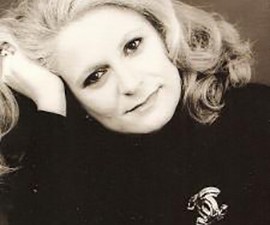by Pauline Kiernan
Film is visual storytelling, which seems too obvious to point out, but many writers start out focusing on plot and character without thinking very much about the visuals. If you’re not thinking in images as you write, you’re losing out on one of the most dynamic ways of creating screenplays of cinematic power. Visual grammar’s possibilities for strengthening every aspect of your script are endless. Think beyond ‘picture’. Visuals aren’t about backdrop and setting. They play an essential role in the story-telling.
And film works on the audience’s subconscious in a visceral, palpable way. Powerful use of visuals helps you to discover how to connect to the audience’s emotions at the deepest level, develop the interactions of your characters into finely-wrought layers of meaning, shape the emotional plot so it powers the surface plot, reveal inner and outer conflict – everything in the script.
WORKOUTS
Brainstorming Prompts
Creating Powerful Images
- 1. Watch each of these clips, one at a time.
– No Country For Old Men http://www.youtube.com/watch?v=wkh6if8TL2U
– Brokeback Mountain https://www.youtube.com/watch?v=tf2ftEnWzDQ
– Slumdog Millionaire https://www.youtube.com/watch?v=NzGzjqhVKbA
(all clips are live at the time of writing this. If there’s no access, please search youtube for clips of these films)
- 2. With each one, you’re going to look out for how many elements are being brought into play by the visuals.
- What do you see?
- What do you feel?
- How is what you see contributing to:
– mood and atmosphere?
– revealing character?
– emotional resonance?
– inner lives of the characters?
– articulating suppressed thoughts?
– forwarding the emotional plot?
– forwarding the surface plot?
– story thread?
– structuring and pacing?
– thematic depth, the deeper meaning of the story?
– anything significant about characters’ clothes?
– if you know the film, any foreshadowings?
– any retrospective significances – revealing withheld meaning to audience?
Look for how the visuals are drawing the audience into the inner lives of the characters
How are the visuals, sound, dialogue, structuring and anything else being layered into a unified whole?
Add your own suggestions to this list. Jot down some very quick notes. Include the number of elements you have identified.
- Now write the description lines for the visuals of each clip, incorporating the same elements you’ve noted down.
- Read over your description lines.
- Go back to your lines and see whether there’s anything that would improve them. Rewrite them. Rewrite them. And rewrite them.
If you’re a little surprised at how much meaning visuals can make, good.
Look at clips from a range of films and do this workout above and thinking and writing visually will become automatic for you. And that means your scripts will take quantum leaps without you really noticing.
And it’s one of the most terrifically useful means of learning subtlety in all that you write. Which is why for the screenwriter, thinking and writing visually is an absolute imperative.
Brainstorming Prompts
Your First Image
What’s the first thing the audience sees? This is absolutely crucial to establishing the world of your story.
How is it evoking emotion?
A place?
Cheerful? Disturbing? Brooding?
[Fill in your own emotive word here]
What does it smell like?
Inside? Outside?
Long-shot? Medium-shot? Close-up?
Night? Day? Dawn? Dusk?
Movement?
Sense of Mystery?
Ultra-realistic?
Normal everyday scene?
Fantasy-like?
Dream-like?
Sound on the Visuals?
It should set Tone and Mood
How important to express this world?
People Talking? Machinery?
Music? – what kind? Mournful? Upbeat?
Weird? Familiar?
To set up Tension?
Atmosphere?
Cold? Hot?
Dry? Moist? Wet?
Sunny? Raining? Grey?
Interior?
Spacious? Cramped?
Dark? Light?
Deserted? Busy?
Familiar? Strange?
Anyone there?
Windows?
Long shot? Medium? Close-up?
Exterior?
Vast? Small? Urban? Country?
Weather?
Deserted? Busy?
Familiar? Strange?
Anyone there?
Long shot? Medium? Close-up?
How is the Script Breathing?
Slowly? Fast? Rising tension? Holding its breath
How is the combination of visuals and sound achieving this?
A person?
Psychological state
Inner emotions?
Happy? Sad? Troubled?
Describe the character
With other characters? How are they all interacting?
Describe other characters
How is this character intriguing?
How much do we see? And why – what significance does this have?
Whole figure?
Just the back?
Just the face?
Their shoes?
Object they’re carrying?
What are they doing?
Hard to see what they’re doing?
Inside? Outside?
How are they dressed?
Now. Ask Yourself:
What is the single most important emotion you want the audience to be feeling as they watch? What’s intriguing them about it?
What is your emotional connection with this first image? If you don’t feel one the script reader and audience certainly won’t. You need to come up with something else.
Does the image create the physical, palpable world of your story? It should do. Are you feeling it on your pulses?
Why would the reader want to carry on reading, or the audience want to carry on watching?
What is the single most important impression you want to give in this first image?
Does this convey to the audience the world of your story? It should do.
Why would the audience want to carry on watching?
It cannot be stressed enough that the first image on the screen is absolutely paramount in persuading the audience that the world they are entering is authentic.
It needs:
– To convey a powerful sense of a specific, credible world in which the ensuing story will be played out.
– To appeal to all the senses of the audience. They must not only see, but feel an emotion, hear, smell and feel they can touch it.
It can be a fantasy world, off-the-wall, strange and unfamiliar, whatever. But it must be:
– strong and dynamic.
– intriguing.
Make it Enigmatic
You’re not trying to explain what your story is going to be about. The aim is to get the audience intrigued. They don’t want answers, they don’t want to know what’s coming, they want to be presented with questions to ask. The more your opening image provokes a sense of merely hinting at what is to come the better.
Read scripts
The best way to learn how to write fantastic visuals in your descriptions is to read scripts of great films. Read the opening scenes. Here’s one:
http://www.imsdb.com/scripts/Apocalypse-Now.html
It’s not only a superb demonstration of how a screenwriter establishes a powerful opening with visuals and sound. It shows how the writing on the page can show how the movie is to be filmed by using words and phrases that suggest how scenes can be shot.
Look out for: How have the writers conveyed the overwhelming terror induced in us, the audience?
Scripts available online
You can download thousands of scripts free here: http://www.imsdb.com/







